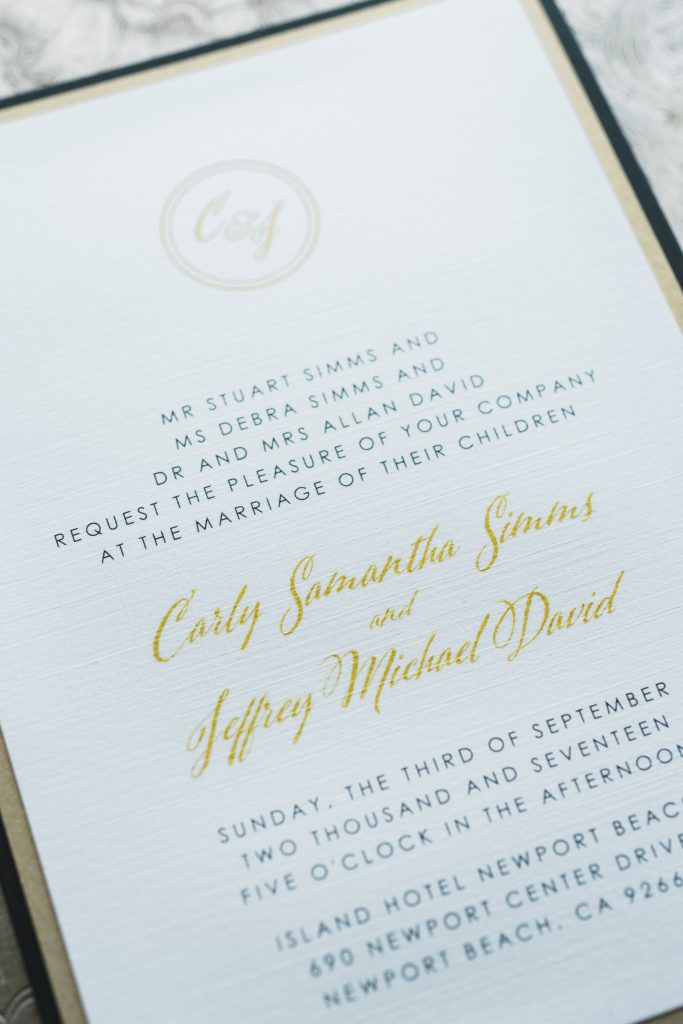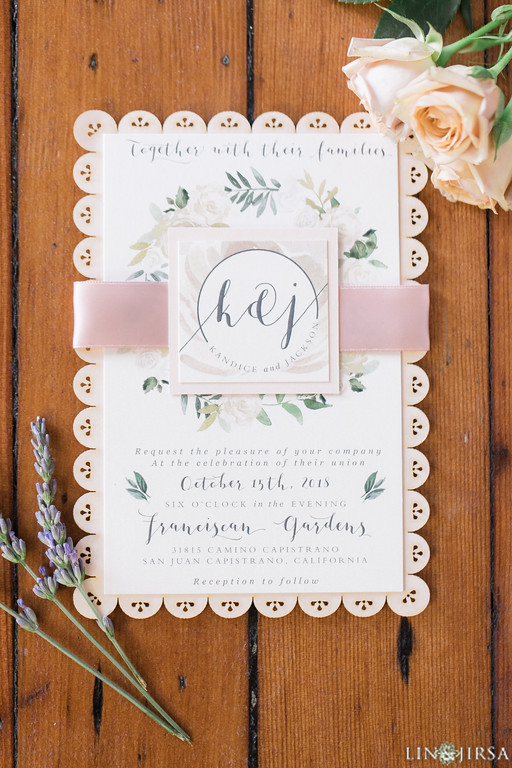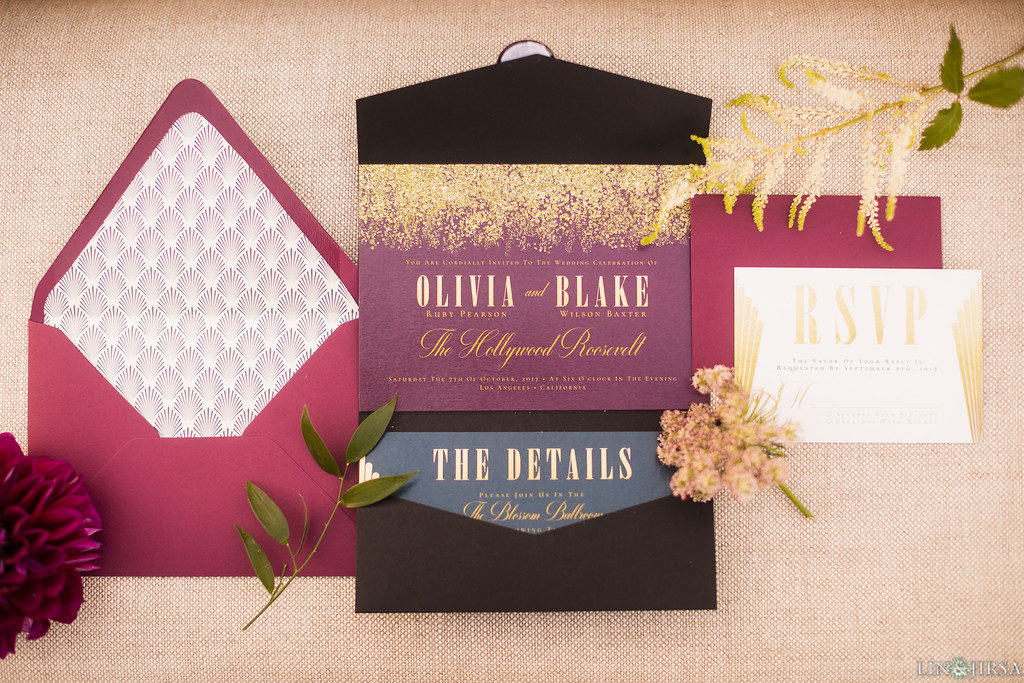
We love anything wedding invitation related around here! From traditional, to modern, to vintage, to unique, we adore the countless ways in which one can design their invitations so that they reflect their style, personality, and give a sneak peek of the wedding day itself. Once you have selected your invitation suite, you then have to decide on the wording and formatting, which can be a lot to think about. With invitations continually evolving, the standard of wedding etiquette is also changing. Nevertheless, there are still tried and true wedding codes of conduct to follow. Whether you are planning a wedding in Orange County or Los Angeles, or a Destination Wedding, we have put together an ultimate guide of must-know tips to consider when creating your perfect wedding invitation!
Timing is Everything
First and foremost, get organized 5-6 months prior to begin creating your invitation suite and order your invitations 4-5 months prior — you will want to allow plenty of time for printing, assembling, and addressing. If you are hiring a professional calligrapher, they will need at least 2 weeks to address all of your envelopes. Printed labels are not considered appropriate but printed calligraphy from a computer has become acceptable. Plan on sending out your invitations 8-12 weeks prior to your wedding date. For Destination weddings, 12-14 weeks prior. This will give your guests enough time to RSVP and for you to gather a headcount 2-3 weeks prior to the big day.


Choose Your Words Wisely
The very first line of your invitation includes the names of those hosting the celebration, traditionally the bride’s parents. However in modern times, the groom’s parents may be contributing as well. If this is the case, you will need to include the groom’s parents’ names at the top of the invitation card. For brides and grooms who are paying for the wedding themselves, but still want to include their families, they may choose to say “Together with Their Families or Parents” followed by the bride and groom’s names.
Next comes the Request line. Two phrases are the most common, however other informal wording that reflect the couple’s style is becoming popular as well. If your ceremony is being held in a church, the wording is typically more traditional and formal.
Church Ceremony – “Request the honor or your presence…”
Ceremony Not Held in a Church – “Request the pleasure of your company…”
The Bride and Groom’s names are to follow on separate lines, typically in a larger or unique font that stands out from the lines above.
The wedding Date and Time are listed next, traditionally with the numbers spelled out. Using numerals is a contemporary style, but not necessarily more casual.
When listing the Location, the state is often spelled out. No need for commas at the end of a line.

It’s All About the Details
If you have multiple events throughout the wedding weekend and want to let guests know about accommodations (and any other items you wish to highlight), you can create an insert called a Details card. You can also list your wedding website, if you have created one. One thing that should not appear anywhere on your invitations is where you are registered (the only appropriate place to list that information is on your wedding website).
If the reception is being held at a different location than the ceremony, a separate card with a map may be helpful. Or, you can just include these details at the top of your Details card.
If you want to emphasize a certain attire at your celebration, you can include this at the bottom of your Details card (for example, “Black Tie Optional” or “Casual Attire”), along with noting if children are included or not with words such as “An Adult Only Affair.”
How Guests Respond
Include an RSVP card in your wedding invitations with its own envelope and stamp, out of convenience for your guests — and to make collecting your head count a lot easier on you. Your RSVP card is where you can also list entree selections, if you are giving guests a choice of entree, as well as the date you need guests to RSVP by. We recommend guests should respond at least 3 weeks prior to your wedding date, in order to give you time to place calls to guests who have not responded and still make your headcount commitment to your venue or caterer on time. Due to increased allergies and other food restrictions your guests may have, we recommend you include a line for guests to indicate any dietary restrictions at the bottom of your RSVP card.

Put Your Own Stamp On It
Once you make sure all of the key details are there, the sky is the limit with style and presentation. You can also look into customizing your own postage stamps to complement your design. At the end of the day, your wedding invitations are something that should reflect you as a couple and the big day to come!

Photography – Lin & Jirsa | Contact: contact@linandjirsa.com // Jim Kennedy Photographers | Contact: studio@jimkennedyphotographers.com
